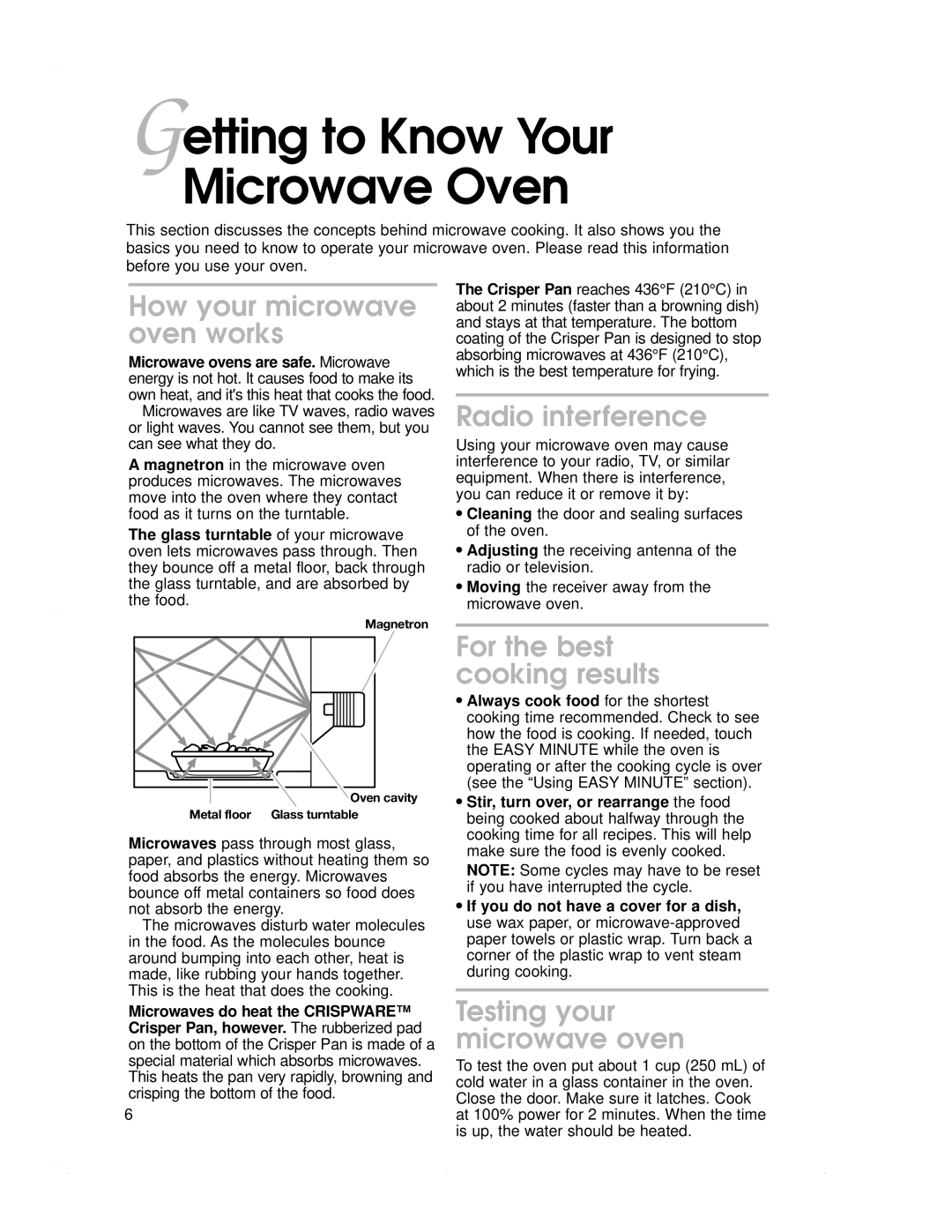
Getting to Know Your Microwave Oven
This section discusses the concepts behind microwave cooking. It also shows you the basics you need to know to operate your microwave oven. Please read this information
before you use your oven.
How your microwave oven works
Microwave ovens are safe. Microwave energy is not hot. It causes food to make its own heat, and it's this heat that cooks the food.
Microwaves are like TV waves, radio waves or light waves. You cannot see them, but you can see what they do.
A magnetron in the microwave oven produces microwaves. The microwaves move into the oven where they contact food as it turns on the turntable.
The glass turntable of your microwave oven lets microwaves pass through. Then they bounce off a metal floor, back through the glass turntable, and are absorbed by the food.
The Crisper Pan reaches 436°F (210°C) in about 2 minutes (faster than a browning dish) and stays at that temperature. The bottom coating of the Crisper Pan is designed to stop absorbing microwaves at 436°F (210°C), which is the best temperature for frying.
Radio interference
Using your microwave oven may cause interference to your radio, TV, or similar equipment. When there is interference, you can reduce it or remove it by:
•Cleaning the door and sealing surfaces of the oven.
•Adjusting the receiving antenna of the radio or television.
•Moving the receiver away from the microwave oven.
Magnetron
Oven cavity
Metal floor Glass turntable
Microwaves pass through most glass, paper, and plastics without heating them so food absorbs the energy. Microwaves bounce off metal containers so food does not absorb the energy.
The microwaves disturb water molecules in the food. As the molecules bounce around bumping into each other, heat is made, like rubbing your hands together. This is the heat that does the cooking.
Microwaves do heat the CRISPWARE™ Crisper Pan, however. The rubberized pad on the bottom of the Crisper Pan is made of a special material which absorbs microwaves. This heats the pan very rapidly, browning and crisping the bottom of the food.
6
For the best cooking results
•Always cook food for the shortest cooking time recommended. Check to see how the food is cooking. If needed, touch the EASY MINUTE while the oven is operating or after the cooking cycle is over (see the “Using EASY MINUTE” section).
•Stir, turn over, or rearrange the food being cooked about halfway through the cooking time for all recipes. This will help make sure the food is evenly cooked.
NOTE: Some cycles may have to be reset if you have interrupted the cycle.
•If you do not have a cover for a dish, use wax paper, or
Testing your microwave oven
To test the oven put about 1 cup (250 mL) of cold water in a glass container in the oven. Close the door. Make sure it latches. Cook at 100% power for 2 minutes. When the time is up, the water should be heated.
